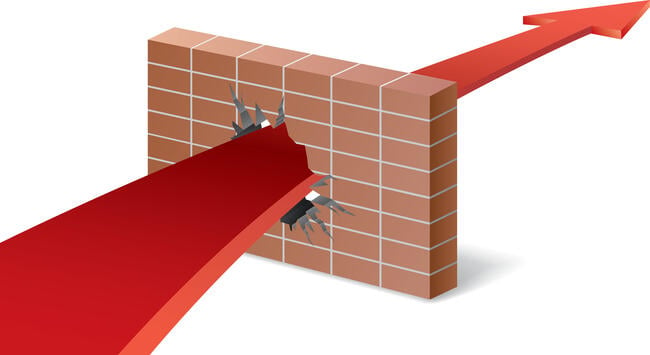You have /5 articles left.
Sign up for a free account or log in.

lvcandy/DigitalVision Vectors/Getty Images
The need for higher education to be disrupted is felt everywhere. The demographic cliff, profound changes to financial models, emergence of artificial intelligence, the public’s loss of confidence and leadership challenges are all commonly cited reasons as to why business cannot continue as usual. Yet, there is usually little discussion of what disruption means and how it feels to actually do it.
Disruption is a fundamental change in the way an institution operates, ideally motivated by a desire to reposition in order to take advantage of future opportunities. It is inherently controversial because it changes the status and welfare of existing stakeholders in favor of others. If the politics were not so difficult, the reforms would likely have already been undertaken. Budget cuts, while sometimes necessary, are usually not disruption because they are often responsive to immediate shortfalls without reflecting a forward vision. The hiring freeze, one of the most common tactics when addressing fiscal challenges, is the very antithesis of the disruption ideal, because retaining those who happen to be employed at the moment and not bringing in new people only acts to preserve existing structures at the cost of change.
Higher education is not accustomed to disruption. Since World War II, colleges and universities in the United States have been in the enviable position of meeting most challenges by expansion—adding new faculty, departments, institutes and schools—because of enrollment growth, generous support from donors, government aid and the international standing of U.S. schools. Now, all that is under threat.
Like many administrators, I have been involved in many difficult decisions to deny tenure, institute layoffs and cut budgets. However, I have also had the opportunity to participate in two truly disruptive exercises from which I learned much.
In 2006–07, as provost of Miami University in Ohio, I helped lead the effort to abolish the School of Interdisciplinary Studies (SIS), have its faculty reassigned to other academic units, end its residential component and create a new academic unit in the College of Arts and Sciences. The SIS had been an excellent idea when established in the early 1970s, as interdisciplinary studies was relatively uncommon. However, by the mid-2000s, the need for research and teaching that breached traditional disciplinary barriers was widely understood, and there were ever-increasing examples at Miami and elsewhere. In addition, the age structure of the faculty meant that we would have needed to hire a significant number of new professors in a relatively underenrolled university division for it to remain viable.
The decision was certainly controversial, as we were bombarded by letters of outrage, faculty resolutions, seemingly endless hostile cartoons in the student newspaper and outbursts during ceremonies. During the years when the program was taught out, SIS students at graduation made sure they told me how little they thought of me as we shook hands on the platform.
As president of American Jewish University in Los Angeles—a position I just stepped down from after seven years—I helped lead the process in which we sold our Bel Air campus to a local school in 2024. The campus was situated in a beautiful neighborhood, but, especially after the pandemic, we were no longer hosting a residential undergraduate program, and our graduate programs had either gone online or could be better located in another part of Los Angeles. Rising property insurance, increased security costs and the prospect of having to expend significant funds on deferred maintenance propelled us to sell the campus so that we could use the university’s assets for better and more productive purposes.
This decision was also very controversial. The campus had been the site of the university for decades and many in the community had fond associations with it, even if they had not visited for many years. The original buyer was a private educational company, and there was dismay that we were not selling to another Jewish institution (although we eventually did when the first buyer pulled out). The local community was vociferous in its reaction to the initial sale, and many of our supporters, including major donors, were very critical of the decision.
It was hardly a surprise that I was the target of a significant amount of criticism given that I was the leading public proponent of both disruptions. University administrators may not like incessant public disparagement, but it comes with the job and the salary. Still, it was a considerable adjustment from my previous life as a professor. Many businesses prepare their leaders for conflict through very intentional professional development. Higher education does little to nothing to prepare leaders for the very real aggravations of public fights.
It is therefore important to have your own kitchen cabinet to not only get good advice and serve as a sounding board, but also to provide the necessary emotional support when things get difficult. Harry Truman said about Washington that if you want a friend, get a dog. However, on campuses and in communities, there will be wise people who are willing to be friendly advisers and will, in fact, appreciate being consulted.
I was surprised at the collateral damage. Faculty and board members who were proponents of the decisions also received threats and public criticism. I felt bad that allies who had stepped up because they also thought it was the right decision were hurt. I’m not sure that there was a way around it. Still, insulating, to the maximum extent possible, those helping to enable the disruption is not only the right thing to do, but critical to promoting further disruption in the future.
Others were afraid of becoming collateral damage. I remember asking one faculty member at Miami who expressed enthusiasm for our decision if he would support me in public. He replied that he, and many others, would not, even though they knew it was the right decision, because they did not want to antagonize their colleagues who were also their neighbors, fellow church members and parents on their kids’ Little League team. Administrators who are trained to believe that the most logical, best-supported argument will win the day have to recognize that the social bonds of the university community—one of an institution’s greatest strengths in most circumstances—will mean that they will have less support than they think they should have on the basis of who is right.
The communications challenges of disruptive change are also immense. In both instances, we thought that we had perfectly logical arguments about how to use scarce resources—faculty and money—in far better ways. We told ourselves and the world that this is exactly what universities should be doing. However, those who would be hurt, either directly or because their association with the school or campus would be cut, were enraged, and both easily identifiable and mobilizable.
In contrast, the “winners” were future students and faculty who did not even know what was being done on their behalf. A good communications strategy is critical, but you should be under no illusions: You may lose, or seemingly lose, the public battle, at least judged by the volume of complaints. It is critical to remember that the biggest process challenge in many disruptions is that the reforms are being done on behalf of those who at the moment have no voice. The public conversation should be evaluated accordingly.
In the end, governing boards make the final decision, and I was gratified that both my boards endorsed the disruptions I had helped engineer. Ensuring that the eventual deciders are fully informed of the logic of the proposal and are willing to face public opprobrium is absolutely critical. Trustees usually do not sign up for being central players in very public, fraught dramas where they are yelled at in public and insulted at parties and at their country club. A component of the attraction of being on a board is to be part of a bucolic academic community with which one has close personal ties. However, boards are demanding that colleges change, and trustees will have to understand that they will be in the fray during very public disputes.
Napoleon said, “If you start to take Vienna, take Vienna.” It is possible to win big fights even if you feel personally distraught at the abuse you have taken, if your friends and people you care about are battered, and if your very logical public arguments are dismissed. Higher education can overcome the challenges to disruption and we can engineer paths to much brighter futures. That is, in the end, what will save us.




